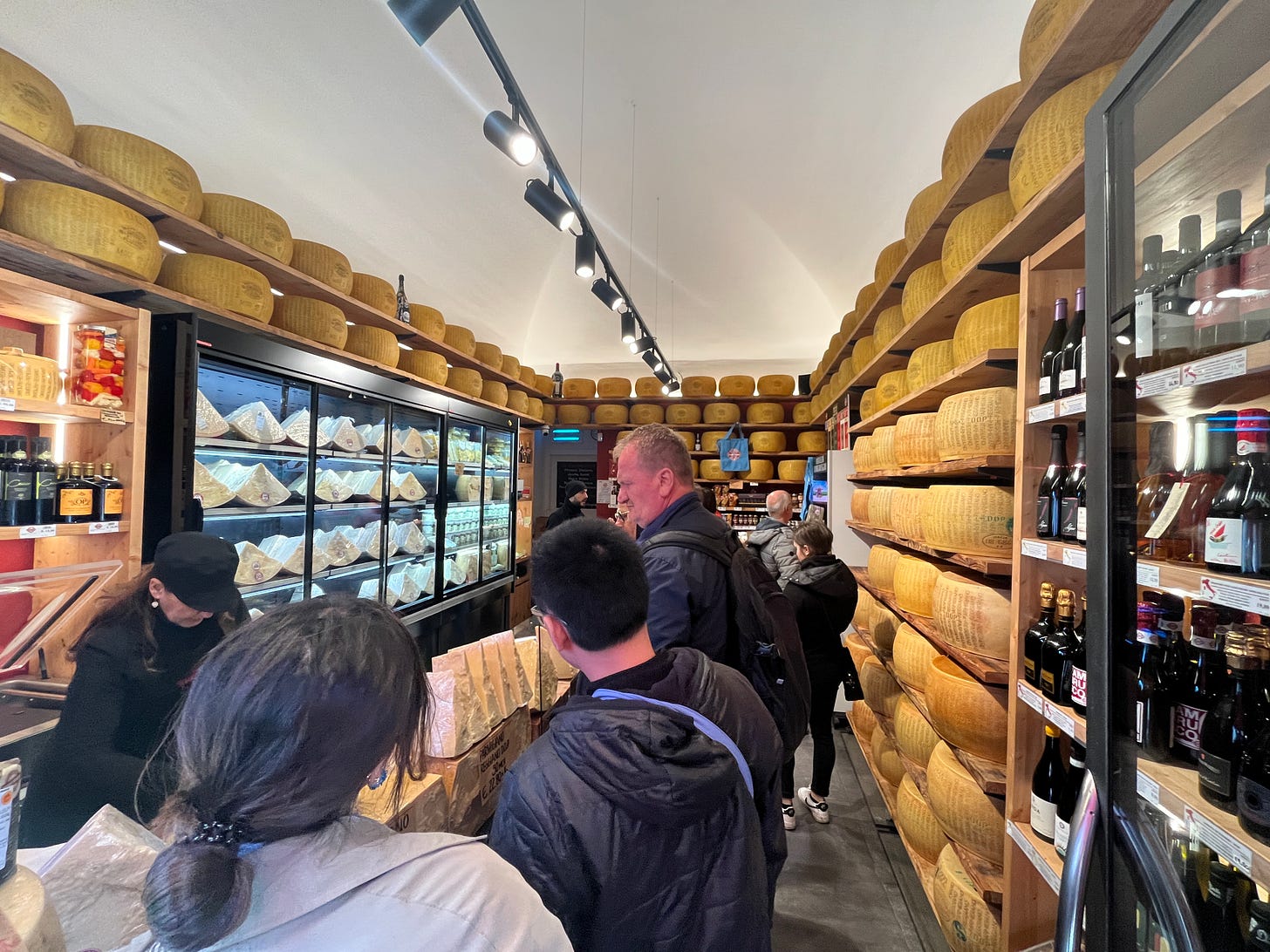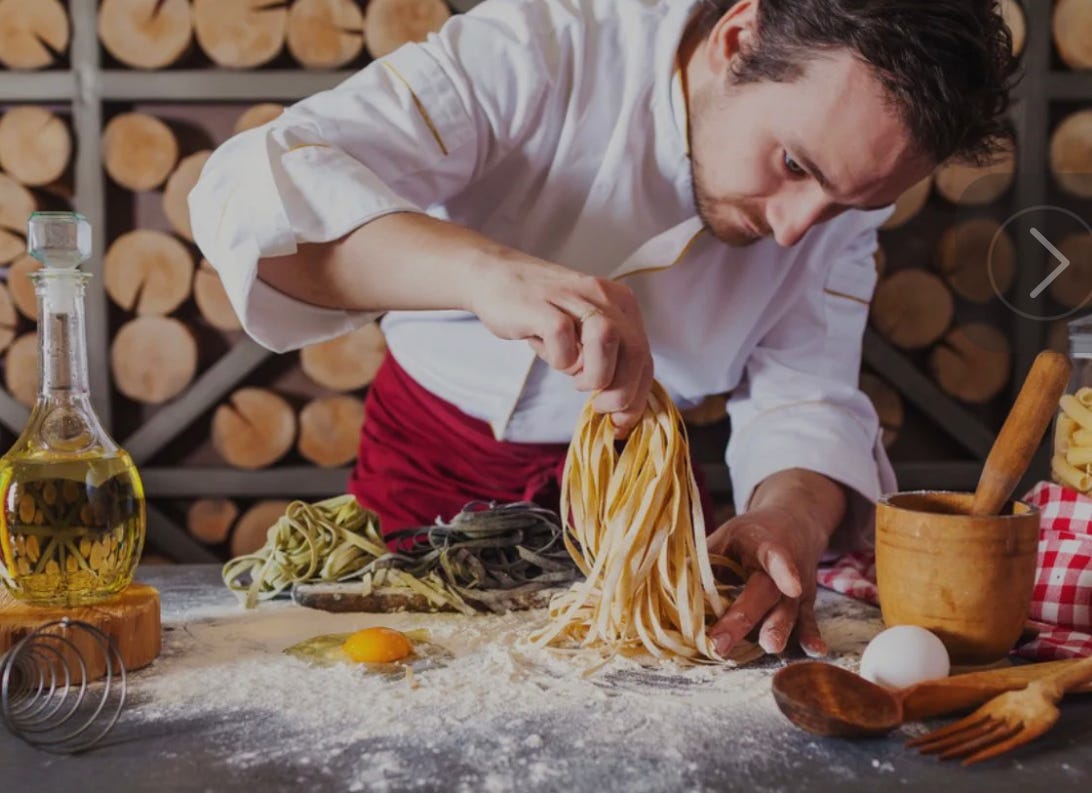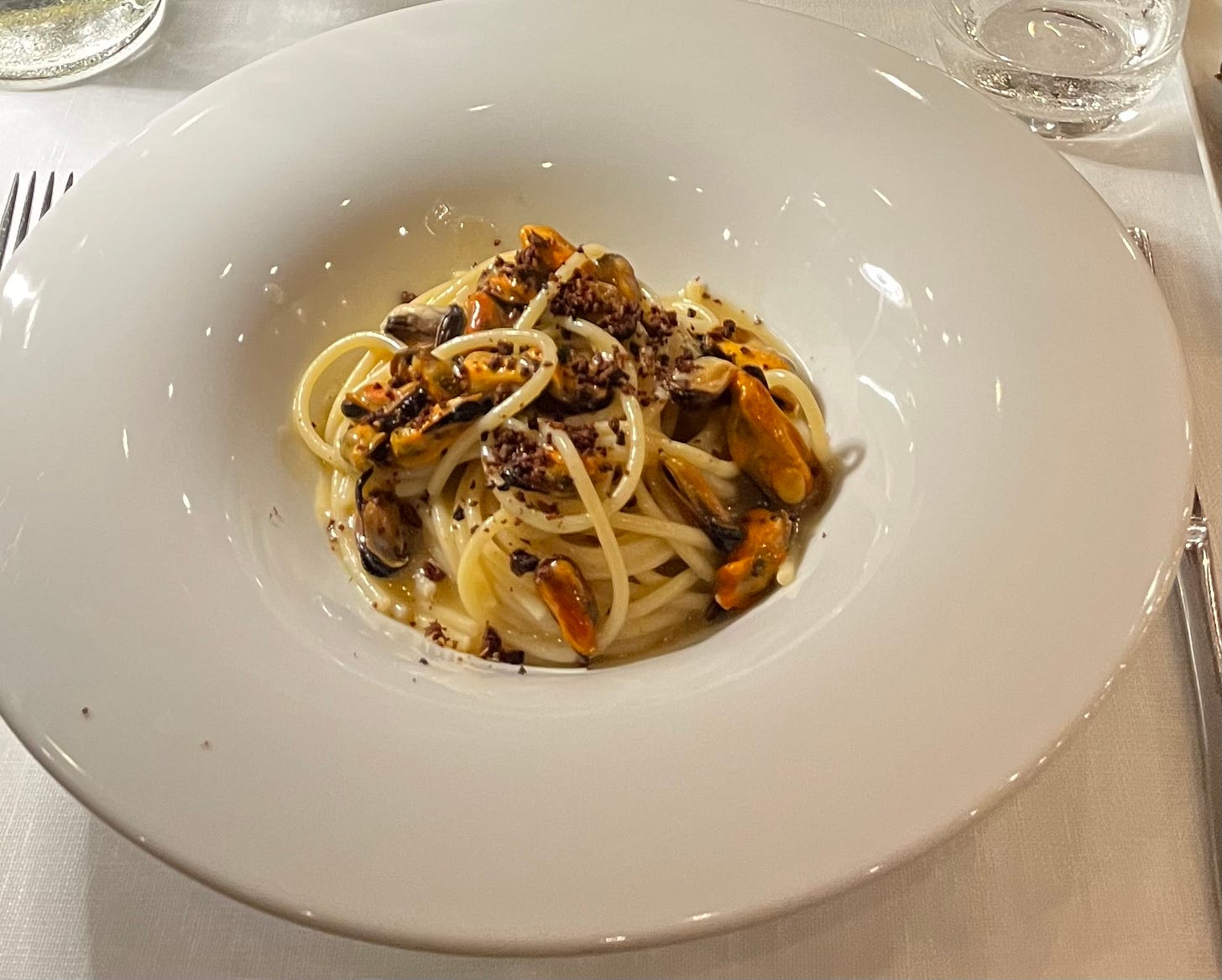A few weeks ago, at a gathering of family and friends, sipping a glass of prosecco, a thought struck me, how do Italians manage to enjoy food so much while maintaining such svelte physiques? This question had been lingering in my mind for a while, and I knew I had to explore it.
As someone who lives for good food and a great glass of wine, I made it my personal mission to uncover the secret behind this phenomenon. As I dug deeper into their habits, I discovered a fascinating blend of culture, lifestyle, and tradition that holds the key. So, what’s their secret? Let’s take a closer look.
The Food Philosophy
Of all the factors analyzed, eating habits play the biggest role. Italians don’t just eat to satisfy hunger; they savor every bite, enjoying the moment and sharing it with others. Dishes are served in modest portions, never overflowing. And they are the world’s toughest food critics. Every dish is analyzed and discussed, with time taken to appreciate its flavors and textures. Generally speaking, food is made with fewer additives, focusing instead on high-quality ingredients and traditional craftsmanship. Restaurants, too, respect the high culinary standards that locals demand.
I remember visiting the city of Cremona a few years ago. I had read that Hosteria 700 served the best tortelli alla zucca (pumpkin tortelli). Without even looking at the menu, I told the waiter we were there specifically for that dish. To my disappointment, he replied, “But it’s June. Pumpkins are only in season in the fall. You simply must come back.”
Another time, I asked a waiter for salmon, and in an almost apologetic voice, he said, “I’m really sorry, but the only salmon we have is frozen.” Honestly, I probably wouldn’t have noticed!
Italians are also particular about how food is combined. A memorable scene from the movie “Big Night” (1996) illustrates this perfectly. When a diner in New York requests a side of spaghetti with their seafood risotto, the chef, is deeply offended. It’s a culinary faux pas in Italy, risotto and pasta are distinct dishes, never to be served together.
They also take great pride in sourcing the finest ingredients. It’s not uncommon for someone to travel across town, or even to another valley, just to visit a specific bakery or butcher, passing several others along the way. This is beautifully illustrated in a book I loved. North of Naples, South of Rome by Paolo Tullio. It’s an authentic, witty portrayal of Italian culture and the culinary habits of that region. I highly recommend it.
Unlike in North America, fast food holds little appeal. Also, they don’t indulge in high-calorie snacks continuously throughout the day. Instead, the Mediterranean diet takes center stage, rich in olive oil, fish, vegetables, and whole grains, ensuring high nutritional value without unnecessary calories.
One thing I had to get used to was the late dinners, often between 8:00 and 9:00 PM. By mealtime, I would be starving and devour everything in front of me! That’s why Italians have merenda, a 5 o’clock afternoon healthy snack, to hold them over until dinner.
Despite the popularity of restaurants, most Italians still prepare and enjoy home-cooked meals daily, making dining out a special occasion rather than the norm.
Soft drinks and alcoholic beverages are also consumed in moderation. Italians love their wine, but most don’t drink it on weekdays, and in restaurants, a single bottle is often shared among four people.
Italians consume a significant amount of flour, but their usage is different from other countries. Flour is a staple in Italian cuisine, essential for making bread, pasta, pizza, and pastries. However, countries like the U.S. and Germany may consume more flour per capita due to a higher reliance on processed foods, fast food, and industrial baking.
What sets Italy apart is the quality and variety of flour used. Italian flour tends to be more naturally processed, without the added preservatives and bleaching agents often found in North American flours. They have flour suited for specific culinary traditions, like semola for pasta, tipo 0 for pizza, and tipo 00 for pastries. These have a lower gluten content compared to North American bread flour, making the dough softer and more digestible.
Last year, five of my good friends from Canada visited me. After two weeks, one of them admitted, “I really enjoy Italian food, but I’m kind of getting fed up with it.” Italians don’t get fed up with it. Mainly because every region (Italy has 20) has its own unique cuisine, offering endless variety.
The Art of Slowing Down
Seventy percent of Italian towns have fewer than 5,000 residents, and life in these places is quite different from the hustle and bustle of Rome, Milan, or Turin. Life is slower, and the approach to time is more relaxed.
One thing that struck me the most when I moved here was how nonchalant people are about time. They would say, “Let’s have coffee this afternoon.” I’d ask, “What time?” The response? “Oh, this afternoon sometime.” Was that 2, 3, or 4 o’clock? At first, this lack of precision frustrated me, but over time, I realized it creates a more relaxed, less stressful way of life.
This laid-back approach extends everywhere. I called a real estate broker a few times, and they would return my calls after a week or ten days, something I initially struggled to understand.
Last week, I was at my doctor’s office for a routine check-up. He came in and started by telling me how the humidity was making his bones ache. He went on and on about his aches and pains. I almost told him to take two Tylenol and get plenty of rest! There was no rush, no sense of urgency, even though five people were waiting outside.
No matter where you are, people take time to talk to each other. You never leave a store or a coffee bar without saying goodbye to the bartender or the people around you.
The sense of community is strong, and the warmth and ease of daily interactions make you feel like you are never alone.
The opening chapter of Outliers by Malcolm Gladwell introduces the “Roseto Effect,” a fascinating case study about the power of community in shaping health and well-being.
Briefly put, in the 1950s, researchers discovered an astonishing health phenomenon in Roseto, Pennsylvania, a town founded by Italian immigrants from Foggia. Despite diets rich in pasta and wine, Rosetans had remarkably low rates of heart disease. The secret? A way of life deeply rooted in Italian village traditions, strong family bonds, close-knit communities, and a culture of mutual support. This “Roseto Effect” mirrors what researchers have found in small Italian towns, where social connection and belonging contribute to longevity.
Active Lifestyle
Italians walk everywhere. Cities and towns are designed for walking, and daily movement is naturally built into life. Instead of intense gym sessions, many Italians stay active through cycling, hiking, or manual work. In small towns, many still have their own vegetable gardens, providing both exercise and fresh food.
One of their favorite activities is the Sunday passeggiata, a leisurely stroll through town (see my newsletter from August 17). Additionally, parking is often unavailable close to home, so people are constantly walking to and from their cars. The mild winters also allow people of all ages to spend more time outdoors.
Forever Fashionable
Although I’m placing fashion at the end of my observations, it is by no means the least important consideration. Looking good is a priority for Italians. Style isn’t just about clothing; it’s a reflection of self-respect, confidence, and even a bit of social strategy.
One moment that stood out to me was when I was heading out for a quick grocery run. Just as I reached for the door, Emi gave me a once-over and frowned. "Where are you going with a blue and beige scarf and a red and gray cap?"
I shrugged. "Just to the store." Emi shook her head, unimpressed. "That doesn’t matter. You never know who you might run into out there."
That mindset, always being put-together, regardless of age or occasion, seems to be ingrained in them. Whether it’s a casual coffee run or a formal event, they believe in presenting their best self to the world. Chic is not just a choice; it’s a lifestyle.
The Bottom Line
In the end, it all comes down to a lifestyle shaped by balance, tradition, and culture.
Italians’ mindful approach to eating, strong sense of community, active daily routines, and relaxed outlook on life all play a part in their overall well-being. But perhaps the real takeaway isn’t just about food, it’s about embracing a way of life that has been passed down for generations, not as a conscious choice, but as something deeply ingrained in their everyday habits.













Nous sommes loin du style de vie que l’on peut observer en Amérique.
Très bon texte Tino.
L’Italie fut un de mes plus beau voyage, merci pour ce texte me rappelant trois semaines extraordinaires 🙏